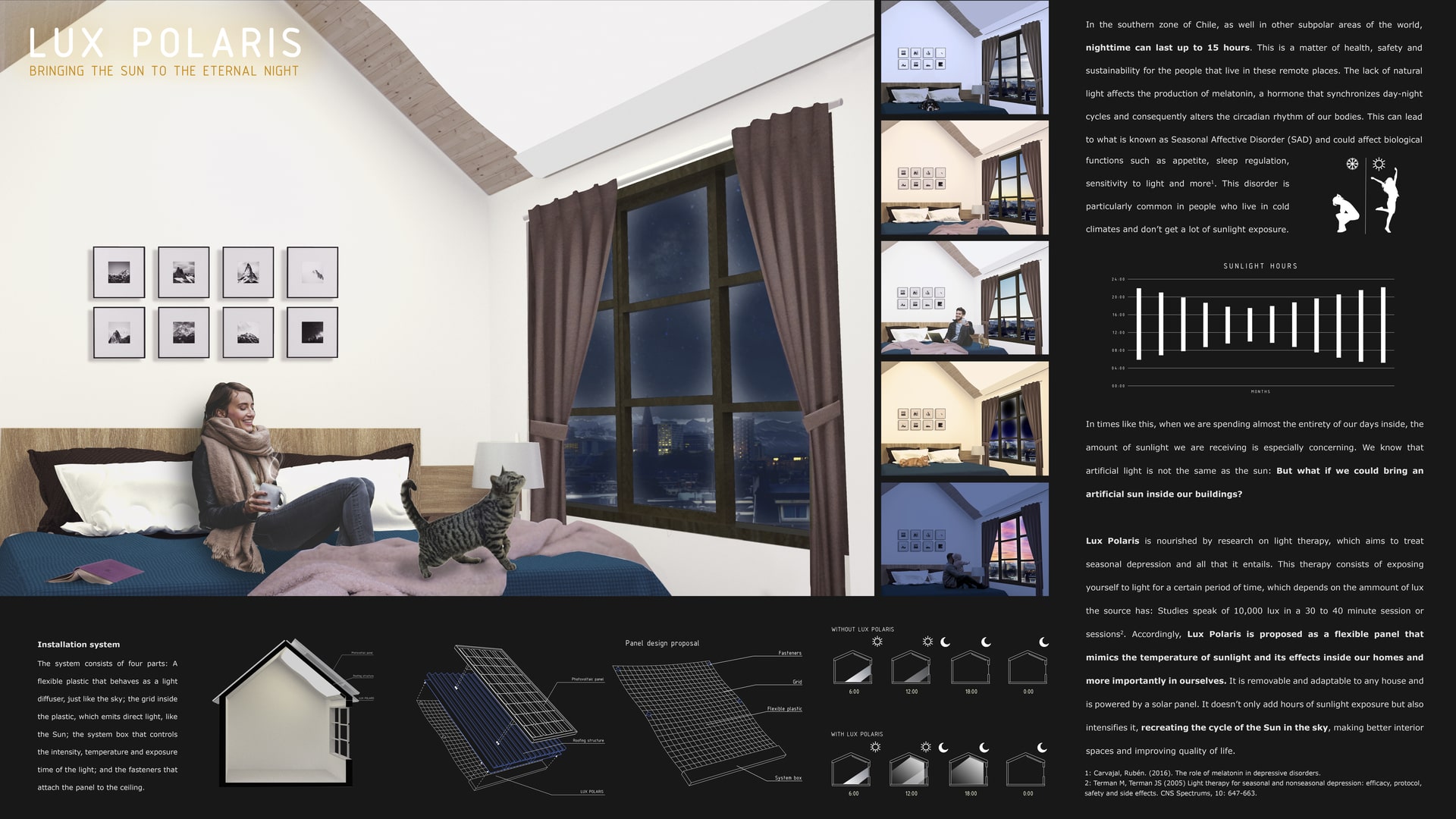Project Description
In the southern zone of Chile, as well in other subpolar areas of the world, nighttime can last up to 15 hours. This is a matter of health, safety and sustainability for the people that live in these remote places. The lack of natural light affects the production of melatonin, a hormone that synchronizes day-night cycles and consequently alters the circadian rhythm of our bodies. This can lead to what is known as Seasonal Affective Disorder (SAD) and could affect biological functions such as appetite, sleep regulation, sensitivity to light and more1. This disorder is particularly common in people who live in cold climates and don’t get a lot of sunlight exposure. In times like this, when we are spending almost the entirety of our days inside, the amount of sunlight we are receiving is especially concerning. We know that artificial light is not the same as the sun: But what if we could bring an artificial sun inside our buildings? Lux Polaris is nourished by research on light therapy, which aims to treat seasonal depression and all that it entails. This therapy consists of exposing yourself to light for a certain period of time, which depends on the amount of lux the source has: Studies speak of 10,000 lux in a 30 to 40 minute session or sessions2. Accordingly, Lux Polaris is proposed as a flexible panel that mimics the temperature of sunlight and its effects inside our homes and more importantly in ourselves. It is removable and adaptable to any house and is powered by a solar panel. It doesn’t only add hours of sunlight exposure but also intensifies it, recreating the cycle of the Sun in the sky, making better interior spaces and improving quality of life. The system consists of four parts, a flexible plastic that behaves as a light diffuser, just like the sky; the grid inside the plastic, which emits direct light, like the Sun; the system box that controls the intensity, temperature and exposure time of the light; and the fasteners that attach the panel to the ceiling. 1: Carvajal, Rubén. (2016). The role of melatonin in depressive disorders. 2: Terman M, Terman JS (2005) Light therapy for seasonal and nonseasonal depression: efficacy, protocol, safety and side effects. CNS Spectrums, 10: 647-663.
